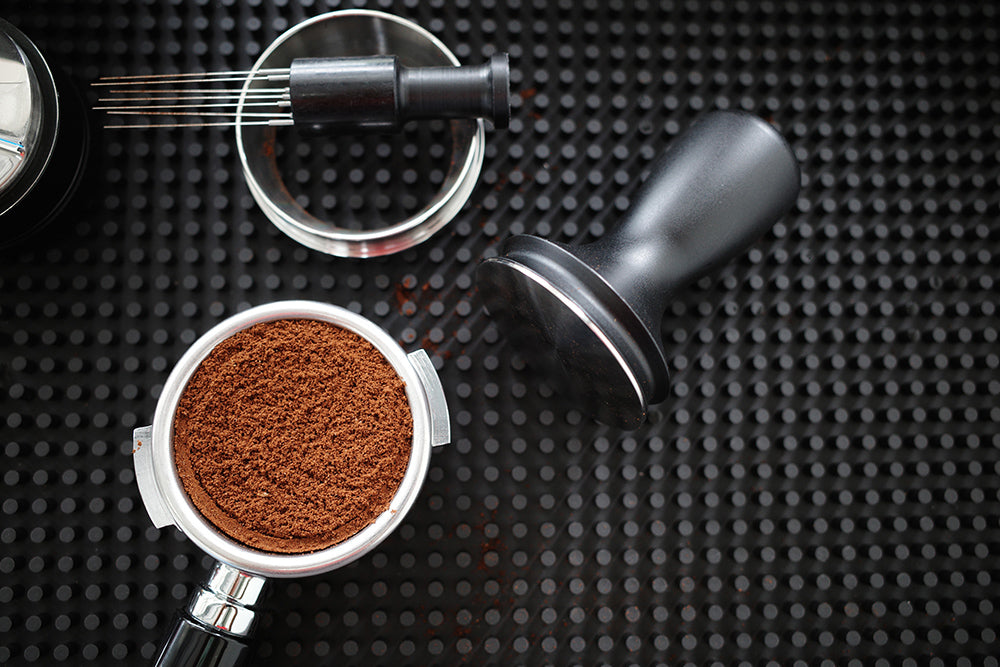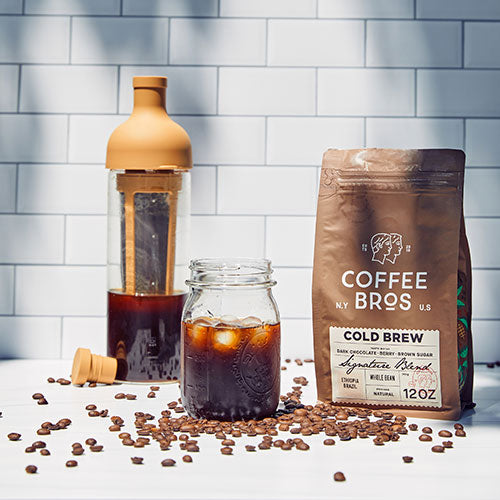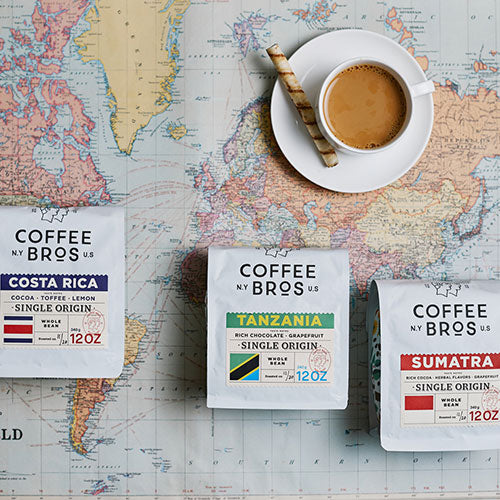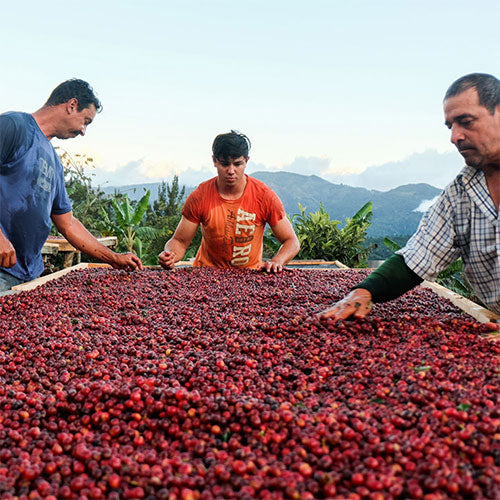Chasing the Perfect Shot: A Guide to Espresso Shot Troubleshooting
Introduction
This blog aims to uncover the common reasons why your espresso may not be up to your desired taste standards. We assume that most readers have a basic understanding of espresso, including the variations in taste based on roasting styles and brewing ratios. For those who may need a refresher, we have included some key definitions to help you understand the concepts discussed in this blog.
Helpful Espresso Brewing Terms
Espresso brew ratios: What is an espresso brew ratio? Espresso brew ratios are the number of coffee grounds used versus the final extraction yield or liquid in your cup.
For example, a double espresso calls for a 1:2 ratio, meaning that for every 1 gram of ground coffee in your espresso portafilter, you aim for 2 grams of espresso yield in your cup. A standard double espresso recipe would call for 19 grams of finely ground coffee in your portafilter, yielding 38 grams of espresso in your cup and typically within 30 – 35 seconds.
Brew ratio terms
Ristretto: A ristretto shot, also known as a restricted shot, is characterized by a brew ratio between 1:1 and 1:1.5
Normale: A normale shot, also known as a standard shot, typically features a brew ratio between 1:2 and 1:3. Using a higher ratio can result in a clearer espresso and a higher percentage of extraction.
Lungo: A lungo is a larger espresso shot that is pulled for a longer period of time, resulting in a cup that is twice the size of a regular espresso shot. The ratio of coffee to water in a lungo is typically between 1:3 and 1:4, and this may vary depending on the barista or home brewer's personal taste preference.
Troubleshooting Espresso Table of Contents
- Troubleshooting a Harsh or Bitter Espresso Shot
- Ways to fix a sour-tasting espresso
- How to fix an espresso with little to no crema
- How to fix a thin-tasting espresso
- How to fix an espresso shot that channels
- How to fix a shot that blondes too early
To troubleshoot and improve your espresso shots, it's essential to have a clear understanding of what a great espresso should taste like. One way to gain this understanding is by visiting reputable cafes and roasters and trying their different espresso blends. Be sure to take notes on the flavors and aromas you experience and ask the coffee professionals there for their insights and guidance.
Here are some common issues that may be affecting the taste of your espresso and how to address them:
Troubleshooting a Harsh or Bitter Espresso Shot
- Verify that your coffee beans are fresh and stored properly, ideally within three weeks of roasting
- Ensure that the extraction rate and the color change during the shot are consistent, pulling the shot too long or too slow can lead to bitterness
- Alter the temperature of your machine according to the roast type, darker roasts should be brewed at lower temperatures than lighter roasts.
Ways to fix a sour-tasting espresso
- Allow your coffee to age a bit longer before brewing to stabilize the flavor.
- Adjust the speed of your shot to prevent over-extraction.
- Ensure your machine's temperature is set correctly.
- For light roasts, consider brewing at a higher temperature to reduce acidity.
- Experiment with different brew ratios, particularly when using light-roasted or single-origin coffees. A higher ratio of water to coffee may produce a smoother and less acidic taste.
How to fix an espresso with little to no crema
- The roast date of your coffee plays a role in the amount of crema produced. Allow a few days for the beans to settle and degas for a more stable crema, but keep in mind that coffee starts to degrade quickly after 21 days past the roast date.
- The roast level of the coffee will also affect the amount of crema. Lighter roasts typically produce less crema than medium or dark roasts.
- A shot that is too fast will also result in little to no crema. Adjust the grind setting to slow down the shot and produce more crema.
How to fix a thin-tasting espresso
- Make sure your coffee is fresh, and no more than three weeks old. This will ensure that it has the right viscosity and flavor.
- Adjust the grind setting to slow down the shot if it's pouring too quickly. This will help produce a thicker, creamier crema.
- Pay attention to the shot volume and timing. The end of the espresso shot should be marked by the third color change. If the shot is running past this point, adjust the volumetric settings.
- Check the temperature and pressure of your machine. The ideal temperature range is between 92C - 96C, and the steam pressure should be between 1 - 1.5 bars, while the pump pressure should be nine bars during the brewing process. For darker roasted coffees you can brew below 92C and for machines with pressure profiling a consistent nine bars can be adjusted to a profile that suits your taste preferences.
How to fix an espresso shot that channels
- Proper distribution of the coffee grounds in the portafilter basket is key to reducing channeling. This can be achieved by spreading the grounds around the basket using small circular motions.
- Techniques such as the Weiss Distribution Technique (WDT) can also help improve extraction and reduce channeling.
- Additional steps such as using a puck screen or paper at the top of the portafilter can also help evenly distribute the water.
- To evaluate the evenness of your extraction, tools like the Naked Portafilter can be used.
- Make sure you use the correct amount of coffee in the basket for your machine and the puck should be firm and spongy.
- Ensure that the basket is dry before use, as a wet basket can encourage water to flow around the puck rather than through it.
- The tamp should be level, otherwise, the water will take the easiest path, which is through the thinnest part of the puck.
- Avoid tapping on the side of the portafilter as it can cause uneven extraction and may damage the seal or create a crack in the puck.
How to fix a shot that blondes too early
- The use of stale coffee can cause early blonding, be sure to check the roast date and storage methods.
- The extraction speed can affect blonding, a shot that flows too quickly can cause the coffee to blonde earlier.
- Inspecting for channeling in the extraction process can also contribute to early blonding.
- The temperature of the machine should also be considered, as it can affect the timing of blonding.
Conclusion
In summary, fine-tuning your espresso shots can be a tricky task, but with a clear understanding of the various factors that influence the taste and quality of your espresso, you can make the appropriate adjustments to achieve the perfect shot. The most common problems that can arise include harsh or bitter, sour, thin, and blonde shots, which are often caused by improper grind or machine settings such as temperature or extraction time. Every coffee and roast is unique, and it may take several attempts to perfect your shot. By following the steps outlined above, you will be well on your way to mastering the art of espresso and creating the perfect shot, just like your favorite café barista!




